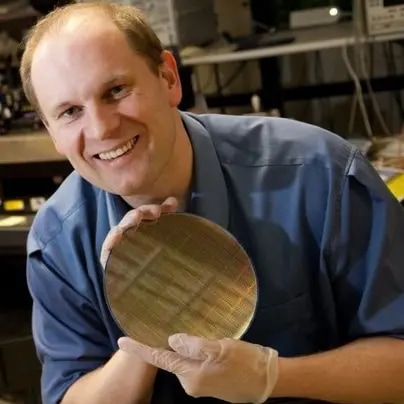Fully Integrated 2D Scalable TX/RX Chipset for D-Band Phased-Array-on-Glass Modules
20 February 2022

The demand for data across all communication networks continues to grow exponentially. This in turn requires an increase in both capacity and density of backhaul point-to-point (PTP) and point-to-multipoint (PTMP) data links. The D-band frequency range (110 to 170GHz) offers ample spectrum and acceptable propagation characteristics for next generation, high-data-rate backhaul systems [1], [2]. A D-band transceiver (TRX) coupled with a 2D phased-array module can overcome the free-space path loss in a flat panel with added capabilities such as self-alignment and pole-vibration mitigation. Such an FDD system (proposed in Fig. 4.1.1(a)) can also be used in self-organizing networks if deployed in a PTMP configuration. Furthermore, if deployed in a multiple-input-multiple-output (MIMO) setup it can achieve very-high-throughput wireless links reaching data-rates exceeding 100Gb/s [1]. To demonstrate such a system two main components are required: First, a high-performance D-band TRX capable of high-order, wide-bandwidth modulation such as the one presented in [1]. Second, scalable TX/RX phased-array front-end modules with 2D scanning capability. Recently published D-band phased-arrays [2]?[6] have reduced usability as they can only be scaled in one dimension. To overcome this limitation, a 2D-scalable array must be realized without compromising system performance. Hence, at D-band, this demands new interposer materials and compact TX/RX phased-array chipsets. This is a difficult problem with current packaging technologies due to their limited available routing layers [2], [3]. Moreover, at D-band, the physical dimensions of the antennas and their spacing become comparable to the size of the phased-array chipsets or even smaller [2]?[6]. This work addresses and overcomes the above challenges as follows. First, a low-loss, fine-lithography interposer technology with multi-layer routing is utilized. It is based on a glass substrate with two redistribution layers (RDL) providing four metal layers. The glass substrate acts both as the flip-chip site and integration platform for RF distribution networks, waveguide interfaces, antennas, and digital/power routing. The phased-array TX/RX chips are designed to be directly attached to the antenna feed points, thereby minimizing interface losses. 0.7A (140GHz) antenna spacing was chosen in part for backhaul PTP applications with stringent grating lobe yet relaxed scanning requirements. The architecture of the proposed D-band phased-array module is shown in Fig. 4.1.1(b). The module is built by integrating 64 phased-array TX or RX front-end chips each with four channels for a total of 256 active elements. A 1-to-64-way D-band power-combiner/splitter network based on a substrate-integrated-waveguide (SIW) topology is implemented in the glass. Furthermore, a 256-element antenna array (configured as 16×16) is implemented in the same glass substrate. Each TX or RX channel interfaces to the antenna through a via probe with an annular ring slot as depicted in Fig. 4.1.1(c). An H-shaped, cavity-backed slot in combination with the via probe location controls the antenna's 2-pole response, allowing for a wide fractional bandwidth (>13%). Local RF loop-back capability is also implemented on the glass substrate. This consists of four antenna elements placed on the perimeter of the array. They are routed to either a separate TX or RX chip that samples a small part of the radiated signal (in nearfield) and feeds it back to the RF calibration port of the TRX. The feedback path can be used for factory testing, array calibration, digital pre-distortion (DPD) training and fault detection after field deployment.


